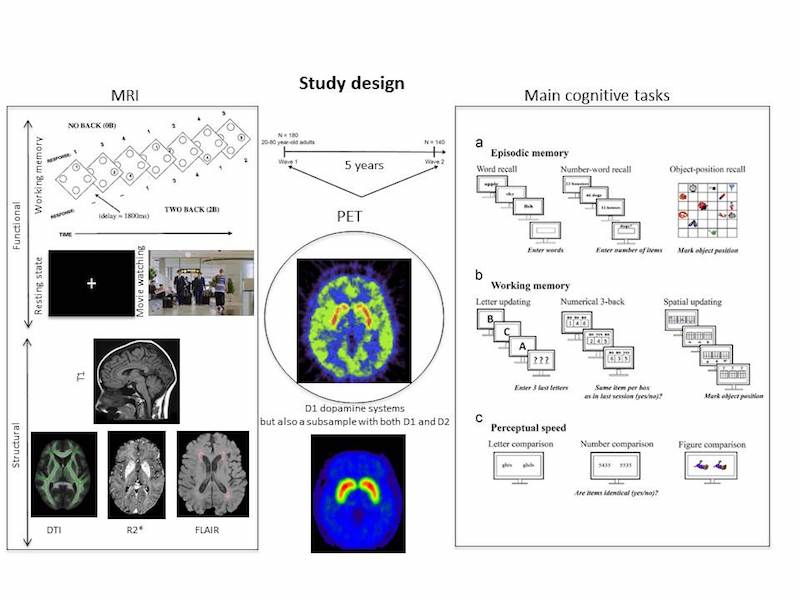
As a part of our attempts to investigate the brain basis of cognitive decline, we started a large scale study, DyNAMiC, in which advanced multimodal brain mapping techniques were used to provide unique insights into neurocognitive mechanisms of healthy aging. One possible brain-based measure underlying cognitive decline is functional connectivity (i.e. synchronicity between distal brain regions), which represents the functional architecture of complex neural systems, collectively constituting the human brain connectome. The overall goal of DyNAMiC is to advance our understanding of the mechanisms underlying the effects of resting-state (but also task-related) functional connectivity on human cognition, and to elucidate the relationship between aberrant functional connectivity in the brain connectome and cognitive decline in normal aging. The specific aims are:
1. To determine the relationship between functional connectivity measured with functional magnetic resonance imaging (fMRI) at rest and behavioral performance as measured in a battery of neuropsychological tests that targets various cognitive processes across the adult lifespan.
2. To determine the impact of brain white matter integrity, as measured by diffusion tensor imaging (DTI), on resting-state functional connectivity across the human lifespan.
3. To determine the contribution of cortical and subcortical dopaminergic neurotransmission as measured by dopamine D1 and D2 receptor binding with positron emission tomography (PET) on resting-state functional connectivity and cognition across the adult lifespan.
4. To determine the impact of mental states, as measured by fMRI during three different conditions (resting, watching a movie, performing a working-memory task) on age-related differences in the functional connectome.

The design of the study is planned to be longitudinal with two measurement occasions 5-years apart. We are halfway through data collection for the baseline, where 180 participants (20-80 years old) performed an extensive cognitive test battery, and underwent fMRI scanning across different cognitive states along with dopamine D1/D2 PET assessment. In addition, lifestyle descriptives were collected, and blood sample were obtained and stored for future evaluation.

